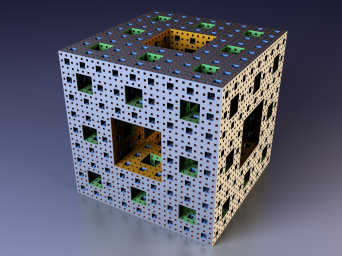Modular origami is a branch of origami in which individual, identical units are combined to form a final, component model. Modular origami projects are often symmetrical, with repeated shapes and patterns found throughout the entire piece. This regular, geometric 3D symmetry represented in complex modular origami models can resemble the shapes of pollen molecules, viruses, germs, and cells!
Modular origami is commonly used in industrial and commercial design with applications as far ranging as robotics, art and architecture, to furniture! Objects that are designed in a modular fashion allow for less expensive manufacturing costs, and greater repairability. The slideshow below shows a few examples of modular design at work.
In addition, certain modular origami models approximate fractal patterns, notably The Menger Sponge, which is a 3D fractal curve with infinite surface area and zero volume.

The History of the Menger Sponge and MIT: Dr. Jeannine Mosely was one of the preeminent folders of the origami Menger Sponge. She coordinated a project similar to the 2014 Mega Menger in 1995, which was ultimately finished in 2005 with 66,048 units.
Amazingly, OrigaMIT recently reached out to the greater MIT community in 2014 in an effort to build a level 3 Menger Sponge using business cards to contribute to the Mega Menger. The Mega Menger is an international origami build, in which individuals and institutions collaborated globally to create a total of 17 level 3 Menger Sponges that could be theoretically combined to form a level 4 Sponge — the largest ever built.
Watch the video below to learn a little more about MIT’s infatuation with the origami Menger Sponge.
Follow any of the tutorials below to build your own modular origami creation!
Spiky Crown: Modular origami (level 1)
Sonobe Box: Modular origami (level 2)
Stellated Octahedron: Stellations in origami and nature (level 3)


